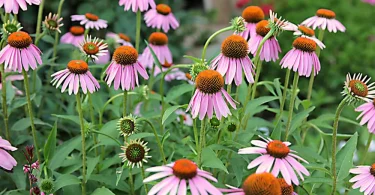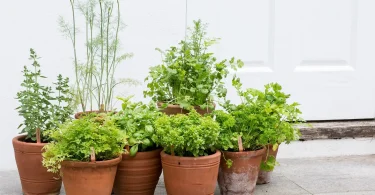The Dracaena Cordyline, often called cordyline or false dracaena, is a striking tropical plant known for its vibrant, lance-shaped leaves in shades of green, red, pink, or variegated patterns. For example, its bold foliage makes it a favorite for adding exotic flair to homes, gardens, or patios. Propagating Dracaena Cordyline is an easy, cost-effective way to multiply these stunning plants. Consequently, this guide provides expert tips to successfully propagate Dracaena Cordyline, ensuring lush, vibrant growth in your space.
Why Propagate Dracaena Cordyline?
Dracaena Cordyline is prized for its dramatic foliage and low-maintenance care, making it ideal for both novice and experienced gardeners. For instance, it thrives as a houseplant or outdoor ornamental in warm climates (USDA zones 9–11). Moreover, propagation allows you to create new plants for free, rejuvenate leggy specimens, or share with others. As a result, it’s a rewarding way to enhance your indoor or outdoor garden with tropical beauty.
Methods of Propagating Dracaena Cordyline
Dracaena Cordyline is most commonly propagated through stem cuttings or cane cuttings, though division is also an option for mature plants. Below are detailed steps for each method.
1. Propagating via Stem Cuttings
- Choosing a Cutting: Select a healthy, non-flowering stem (4–6 inches long) with vibrant leaves and at least one node (where leaves attach). For example, choose stems with bright, colorful foliage free of pests or disease.
- Preparing the Cutting:
- Use clean, sharp scissors or pruning shears to make a 45-degree cut just below a node.
- Remove lower leaves, leaving 2–3 leaves at the top to reduce moisture loss.
- Allow the cutting to dry in a shaded area for 1–2 hours to form a callus, minimizing rot risk.
- Rooting Options:
- Water Rooting:
- Place the cutting in a jar of filtered or distilled water, ensuring the node is submerged but leaves remain dry.
- Change water every 2–3 days to prevent stagnation.
- Position in bright, indirect light (e.g., near a north- or east-facing window).
- Roots typically form in 2–4 weeks.
- Soil Rooting:
- Dip the callused end in rooting hormone (optional) to encourage faster rooting.
- Plant the cutting 1–2 inches deep in a well-draining mix (equal parts potting soil, perlite, and sand).
- Water lightly and cover with a clear plastic bag to maintain humidity, leaving a small opening for air circulation.
- Place in bright, indirect light.
- Water Rooting:
- Transplanting: Once roots are 1–2 inches long (4–6 weeks), transfer water-rooted cuttings to a pot with well-draining soil or continue caring for soil-rooted cuttings as mature plants.
2. Propagating via Cane Cuttings
- Choosing a Cane: Select a healthy, woody cane (stem section without leaves) from a mature plant, ideally 3–6 inches long with multiple nodes.
- Preparing the Cane:
- Cut the cane into sections, each with at least one node, using a clean, sharp knife.
- Allow sections to dry for 1–2 days to callus, reducing rot risk.
- Planting:
- Lay cane sections horizontally on a well-draining soil mix or bury them ½ inch deep.
- Water lightly and cover with a plastic bag to maintain humidity, ensuring ventilation.
- Place in bright, indirect light.
- Rooting and Growth: Roots and new shoots emerge from nodes in 4–8 weeks. For instance, keep soil slightly moist but not soggy during this period.
3. Propagating via Division
- Choosing a Plant: Select a mature, multi-stemmed Dracaena Cordyline with a healthy root system.
- Dividing the Plant:
- Remove the plant from its pot and gently shake off soil to expose roots.
- Use a clean, sharp knife to separate the root ball into sections, ensuring each has roots and stems.
- Trim any damaged roots to promote healthy growth.
- Replanting: Plant each division in a pot with well-draining soil, water thoroughly, and place in bright, indirect light. For example, divisions establish quickly with proper care.
Caring for Propagated Dracaena Cordyline
1. Select the Ideal Location
- Light: Provide bright, indirect light during propagation and for established plants. For instance, Dracaena Cordyline develops vibrant colors in bright light but tolerates partial shade. Avoid direct sun to prevent leaf scorching.
- Temperature: Maintain 65–80°F, avoiding temperatures below 55°F. Protect from cold drafts or sudden changes, especially for indoor plants.
- Humidity: Prefers moderate humidity (40–60%). For example, mist leaves or use a pebble tray indoors in dry conditions.
2. Prepare the Potting Media
- Soil Type: Use a well-draining mix, such as equal parts potting soil, perlite, and peat moss or sand. Alternatively, a commercial tropical plant mix works well.
- Drainage: Ensure pots have drainage holes to prevent water accumulation, which can cause root rot. For instance, terracotta pots enhance breathability.
- pH Level: Aim for a slightly acidic to neutral pH (6.0–6.5). Test with a soil kit if needed.
3. Watering
- During Propagation: Keep soil slightly moist for soil-rooted cuttings, watering every 3–5 days. For water-rooted cuttings, change water every 2–3 days. Avoid overwatering to prevent rot.
- Established Plants: Water when the top inch of soil feels dry, typically every 1–2 weeks in spring/summer and less in fall/winter. For example, overwatering is a common cause of leaf drop, so ensure proper drainage.
- Technique: Water thoroughly at the base, allowing excess to drain. Avoid wetting leaves to reduce fungal risks.
4. Fertilizing
- Frequency: Feed established plants with a diluted, balanced liquid fertilizer (e.g., 10-10-10) every 4–6 weeks during spring and summer. For instance, avoid fertilizing newly propagated cuttings for 6–8 weeks to prevent root burn.
- Caution: Use fertilizer at half strength to avoid over-fertilizing, which can cause leaf tip browning.
5. Maintenance
- Pruning: Trim leggy stems or yellowing leaves to maintain shape and encourage bushiness. For example, prune in spring for best results.
- Cleaning: Wipe leaves with a damp cloth to remove dust and enhance photosynthesis, especially for variegated varieties.
- Repotting: Repot every 1–2 years or when the plant becomes root-bound, using a slightly larger pot with fresh mix.
- Pest Management: Monitor for spider mites, mealybugs, or scale. Consequently, treat with insecticidal soap or neem oil and isolate affected plants.
Common Challenges and Solutions
- No Root Growth: Improper callusing, overwatering, or insufficient light. Therefore, ensure cuttings callus properly, water sparingly, and provide bright, indirect light.
- Leaf Drop: Overwatering, low light, or temperature stress. For instance, reduce watering, move to a brighter spot, and maintain stable temperatures.
- Pests: Spider mites or mealybugs may appear. Thus, treat with insecticidal soap or neem oil and improve air circulation.
- Fading Leaf Color: Insufficient light or nutrient deficiency. Consequently, increase light exposure and apply a balanced fertilizer.
Tips for Success
- Propagation Timing: Propagate in spring or early summer for faster rooting, as warmer temperatures promote growth.
- Indoor Benefits: Dracaena Cordyline purifies indoor air, making it a functional and beautiful houseplant. For example, it’s ideal for offices or living rooms.
- Zone Considerations: In zones 4–8, grow indoors or in containers to protect from frost. In contrast, zones 9–11 support outdoor growth year-round.
- Ornamental Use: Use as a focal point in containers, borders, or tropical gardens for a vibrant, exotic look.
- Companion Planting: Pair with other tropical plants like hibiscus or palms for a lush, cohesive display.
Fun Facts About Dracaena Cordyline
- Cultural Significance: In Hawaiian culture, cordylines are called “ti plants” and symbolize good luck and protection.
- Color Variety: Varieties like ‘Red Sister’ or ‘Hawaiian Boy’ offer stunning red or pink foliage for dramatic effect.
- Versatile Growth: Can be grown as a shrub, small tree, or cascading houseplant, depending on pruning and care.
Troubleshooting Table
| Issue | Cause | Solution |
|---|---|---|
| No root growth | Improper callusing or overwatering | Ensure cuttings callus, water sparingly, provide bright, indirect light. |
| Leaf drop | Overwatering or low light | Reduce watering, ensure proper drainage, move to brighter light. |
| Pests | Spider mites or mealybugs | Treat with insecticidal soap or neem oil; improve air circulation. |
| Fading leaf color | Low light or nutrient deficiency | Increase light exposure, apply balanced fertilizer during growing season. |
Conclusion
Propagating Dracaena Cordyline is a vibrant and rewarding way to grow these tropical beauties. By using stem or cane cuttings, providing proper care, and addressing challenges promptly, you’ll enjoy lush, colorful foliage in your home or garden. For example, with minimal effort, you can create a stunning display of cordylines. Start propagating today, and transform your space with the exotic charm of Dracaena Cordyline!



